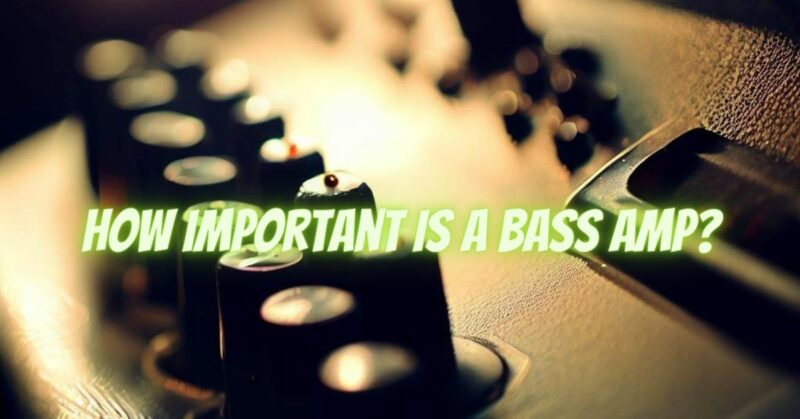The bass amp plays a significant role in shaping the sound and enhancing the performance of a bass guitar. It is specifically designed to handle the unique low-frequency characteristics of the instrument. However, musicians may wonder if a bass amp is truly essential or if it can be substituted. In this article, we will explore the importance of a bass amp, discuss its functions, and explore alternative options for achieving a suitable bass sound.
The Role of a Bass Amp:
- Amplification: A bass amp amplifies the sound signal produced by the bass guitar, allowing it to be heard at an appropriate volume in various performance settings. It provides the necessary power to reproduce the low frequencies accurately.
- Tone Shaping: Bass amps feature tone controls, such as EQ (equalization) knobs, that allow bassists to adjust the bass, midrange, and treble frequencies to create the desired tonal characteristics. This shaping capability enables bassists to customize their sound to fit different musical genres or personal preferences.
- Speaker Cabinet Matching: Bass amps are designed to work in conjunction with specific speaker cabinets, ensuring optimal sound reproduction. The interaction between the amp and cabinet affects the overall tone, projection, and clarity of the bass sound.
- Performance Monitoring: A bass amp provides the bassist with a dedicated monitor, allowing them to hear their instrument clearly on stage. It provides real-time feedback, enabling better control and synchronization with other musicians.
Substitution Options for Bass Amps: While a dedicated bass amp is typically the most effective way to reproduce the full range of bass frequencies, alternative options can be considered depending on specific circumstances:
- Direct Injection (DI) Box: DI boxes are commonly used in live sound and recording situations. They convert the bass guitar’s signal into a balanced line-level output, which can be connected directly to a mixing console or audio interface. While DI boxes provide a clean and balanced signal, they do not offer the tone shaping capabilities or the stage monitoring benefits of a bass amp.
- Audio Interfaces and Virtual Amplifiers: Some audio interfaces and software applications offer bass amp simulations and virtual effects. These can be used in conjunction with a computer or a digital audio workstation (DAW) to achieve a bass sound suitable for recording or practicing. However, they may not fully replicate the dynamics, responsiveness, and stage presence of a physical bass amp in a live performance setting.
- Powered PA Speakers: In certain situations, such as small acoustic performances or jam sessions, powered PA speakers can be used as a substitute for a dedicated bass amp. However, it is important to consider the speaker’s frequency response and power handling capabilities to ensure accurate bass reproduction without risking speaker damage.
Conclusion:
A bass amp plays a vital role in providing the necessary amplification, tone shaping, and monitoring capabilities required for bass guitar performance. While alternative options such as DI boxes, virtual amplifiers, or powered PA speakers can be utilized in specific contexts, they may not fully replicate the characteristics and benefits of a dedicated bass amp. Ultimately, the choice between a bass amp and alternative options depends on the specific requirements, preferences, and performance scenarios of the bassist. For optimal sound quality, tone control, and stage monitoring, investing in a dedicated bass amp remains the most reliable and effective choice for bassists.


